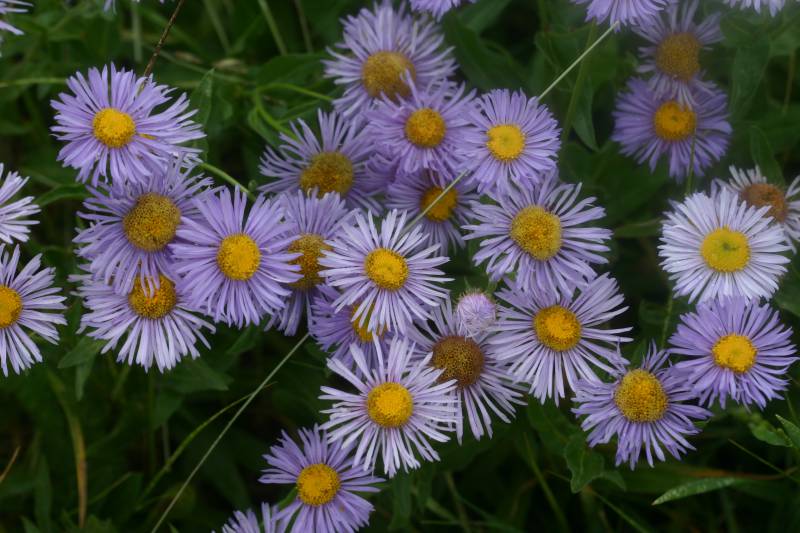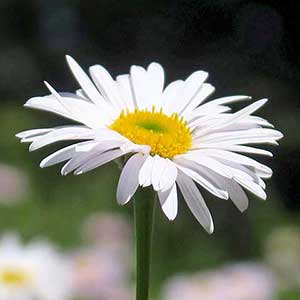|
three-veined fleabane
|
Alice's fleabane, Eastwood's fleabane
|
| Perennial from a short, woody base, 1.5-8 dm. tall, the stems clustered, amply leafy, spreading-hairy throughout. |
Perennial usually from a rhizome, 3-8 dm. tall, amply leafy, covered with stiff, short, blunt hairs. |
Leaves triple-nerved, entire, the lower oblanceolate or spatulate, petiolate, mostly deciduous, the other becoming sessile but ample. |
Leaves entire or coarsely toothed, the lower ones up to 20 cm. long including the petiole, and 3.5 cm. wide, the middle and upper leaves sessile, narrowly lanceolate to oblong. |
Heads 1-13 in a open inflorescence; involucre 6-9 mm. high; rays 65-150, blue or rarely white or pink, 9-18 mm. long and 1 mm. wide; pappus 20-30 bristles, a few of the outer ones shorter. |
Heads 1-several, the disk 12-20 mm. wide; involucral bracts loose, pointed, sub-equal, with conspicuous stiff, white hairs on the lower half, and glands on the upper portion; rays 45-80, pistillate, 10-15 mm. long and 2-3 mm. wide, white to pink-purple; disk corollas 3-4 mm. long, yellow; pappus simple. |
|
Achenes usually 2-nerved. |
|
|
|
|
| July-September |
June-August |
| Moderately dry, open places at low to middle elevations. |
Moist to fairly dry, sandy, open areas at middle elevations in the mountains. |
Occurring on both sides of the Cascades crest in Washington; British Columbia to Washington, east to the Rocky Mountains.
|
Occurring west of the Cascades crest in the Olympic Mountains and southward in Washington; Washington to California.
|
| Native |
Native |
| Not of concern |
Sensitive in Washington (WANHP) |
E. acris, E. aliceae, E. annuus, E. aureus, E. basalticus, E. bloomeri, E. caespitosus, E. chrysopsidis, E. compositus, E. corymbosus, E. davisii, E. disparipilus, E. divergens, E. eatonii, E. elatus, E. filifolius, E. flettii, E. glacialis, E. howellii, E. inornatus, E. karvinskianus, E. leibergii, E. linearis, E. lonchophyllus, E. nivalis, E. oreganus, E. peregrinus, E. philadelphicus, E. piperianus, E. poliospermus, E. pumilus, E. salishii, E. speciosus, E. strigosus |
E. acris, E. annuus, E. aureus, E. basalticus, E. bloomeri, E. caespitosus, E. chrysopsidis, E. compositus, E. corymbosus, E. davisii, E. disparipilus, E. divergens, E. eatonii, E. elatus, E. filifolius, E. flettii, E. glacialis, E. howellii, E. inornatus, E. karvinskianus, E. leibergii, E. linearis, E. lonchophyllus, E. nivalis, E. oreganus, E. peregrinus, E. philadelphicus, E. piperianus, E. poliospermus, E. pumilus, E. salishii, E. speciosus, E. strigosus, E. subtrinervis |
| |



